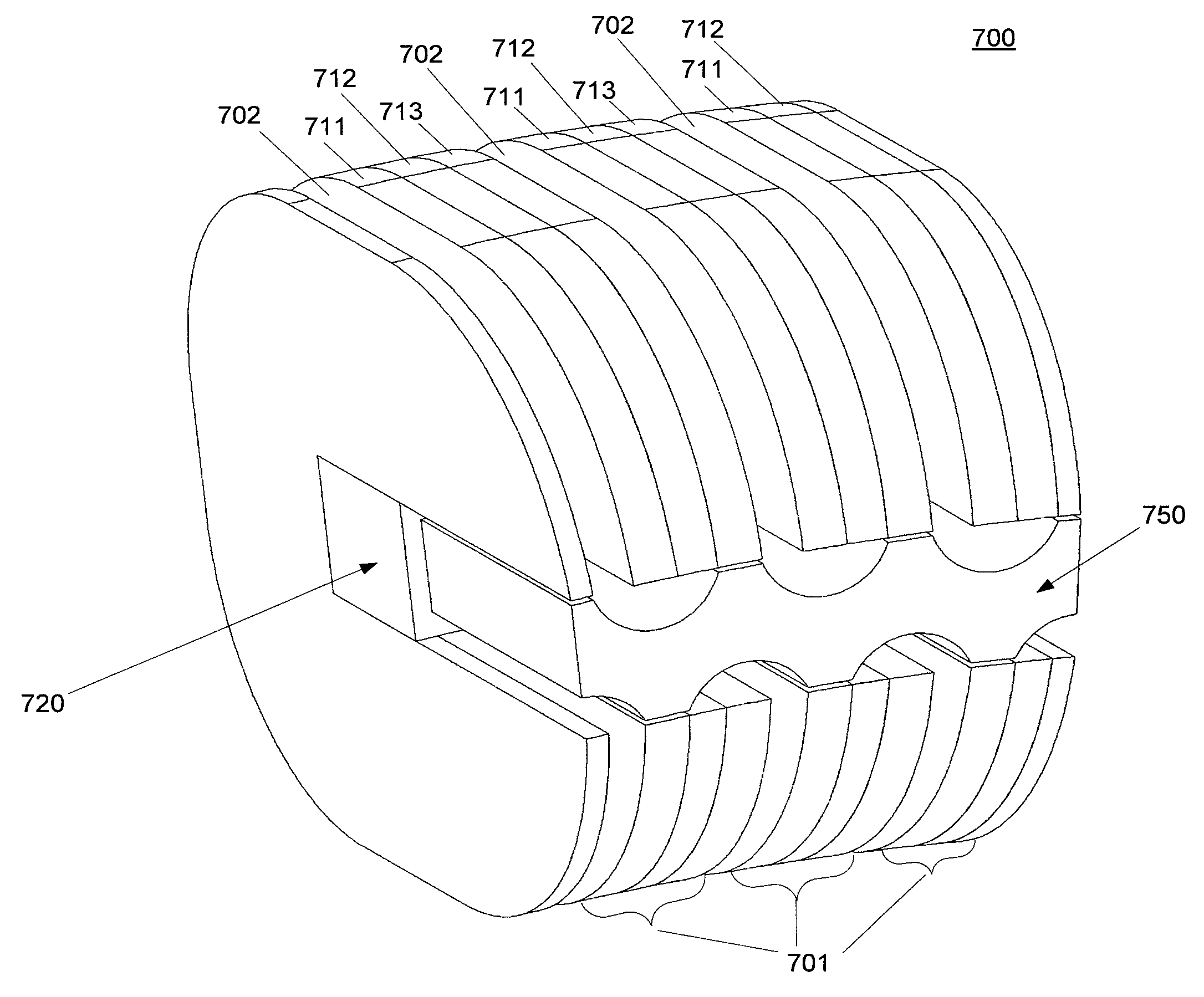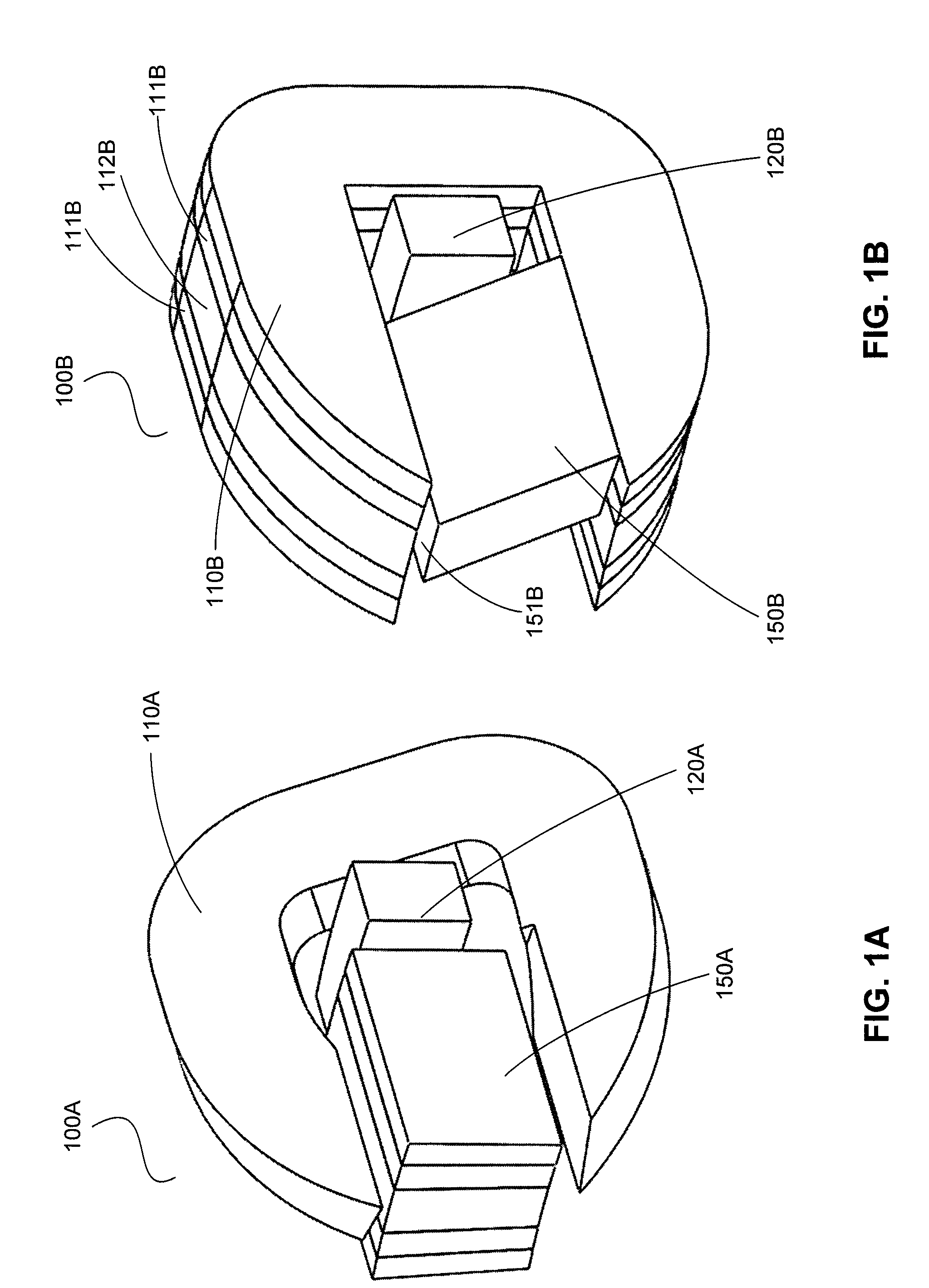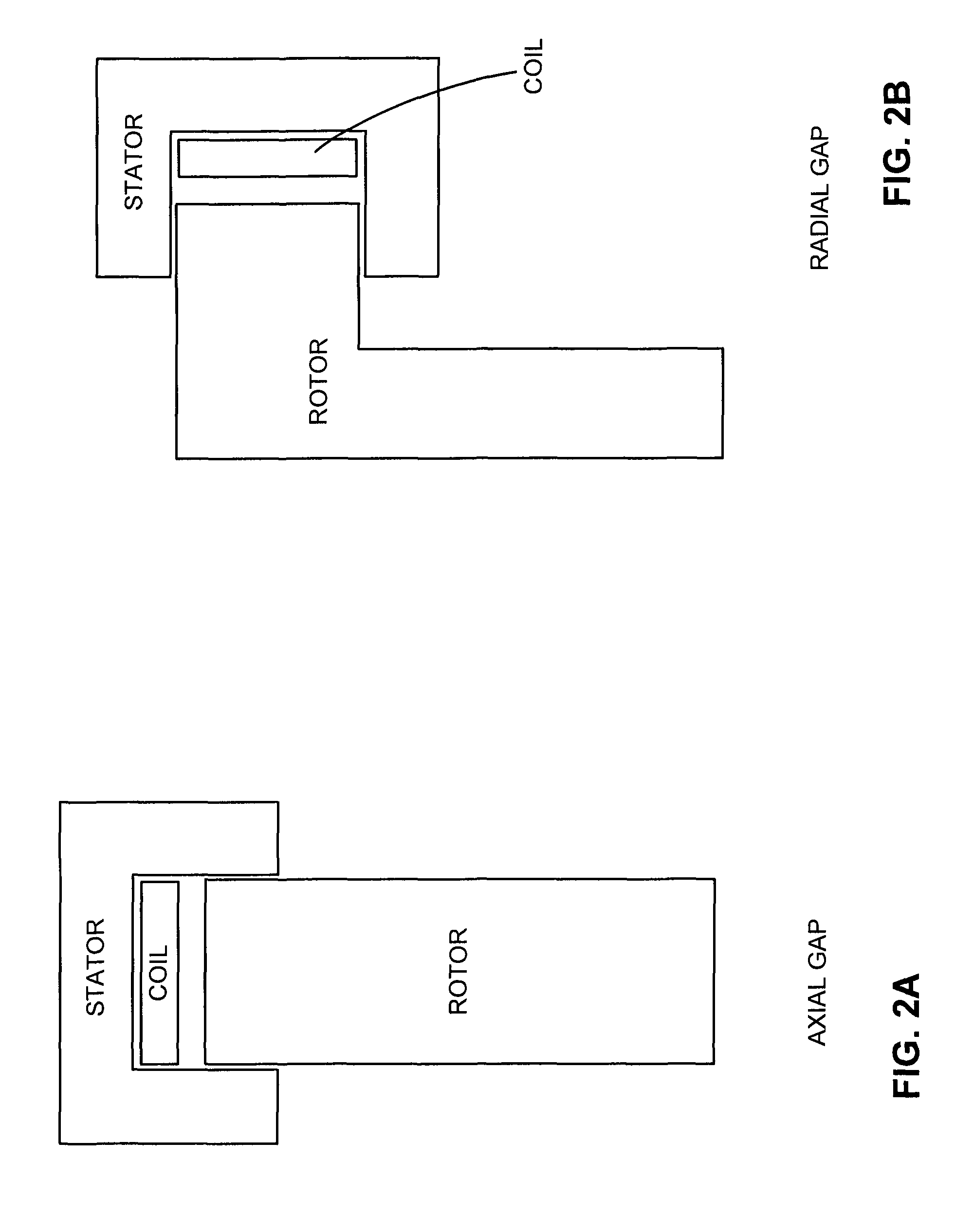However, many applications require lower rotational speeds.
Gear reduction reduces efficiency, adds complexity, adds weight, and adds
space requirements.
Additionally, if a high rotational speed is not desired, and gear reduction is undesirable, then a motor or
alternator typically must have a large number of poles to provide a higher
electrical frequency at a lower rotational speed.
However, there is often a practical limit to the number of poles a particular motor or
alternator can have, for example due to space limitations.
Moreover, existing multipole windings for alternators and electric motors typically require winding geometry and often complex winding machines in order to meet size and / or power needs.
As the number of poles increases, the winding problem is typically made worse.
Additionally, as pole count increases, coil losses also increase (for example, due to resistive effects in the
copper wire or other material comprising the coil).
Prior electric motors, for example conventional DC
brushless motors, suffer from various deficiencies.
For example, many electric motors are inefficient at various rotational speeds and / or loads, for example low rotational speeds.
Moreover, high
electrical frequency can result in increased cost, increased mechanical complexity, and / or decreased reliability.
Additionally, high electrical frequency and associated losses create heat that may require
active cooling, and can limit the operational range of the motor.
Due to the length of the coil windings, resistive effects in the coil lead to coil losses.
For example, such losses convert a portion of electrical energy into heat, reducing efficiency and potentially leading to
thermal damage to and / or functional destruction of the motor.
Moreover, many prior electric motors offered low torque densities.
Moreover, such prior electric motors are often quite bulky as a result of the large motor
mass.
Often, a motor of sufficient torque and / or power for a particular application is difficult or even impossible to fit in the available area.
Even prior
transverse flux machines have been unable to overcome these difficulties.
For example, prior
transverse flux machines have suffered from significant flux leakage.
Additionally, using prior
transverse flux machines to generate substantial output power often required
spinning relatively massive and complicated components (i.e., those involving permanent magnets and / or relatively exotic, dense and / or expensive flux concentrating or conducting materials) at high rates of speed.
Such high-speed operation requires additional expensive and / or complicated components for support and / or
system reliability.
Moreover, many prior transverse flux machines are comparatively expensive and / or difficult to manufacture, limiting their viability.
As illustrated, a conventional
electric motor typically operates at a comparatively low efficiency at low RPM.
As a result, many conventional electric motors are often desirably operated within an RPM range near peak efficiency.
However, such
mechanical components are often costly, bulky, heavy, and / or impose additional energy losses, for example frictional losses.
Moreover, a gearbox may be larger and / or weigh more or cost more than the conventional
electric motor itself.
Gearboxes also reduce the overall reliability of the
system.
Additionally, the efficiency of the transverse and / or commutated flux
machine may fall off more slowly past peak efficiency RPM as compared to a conventional
electric motor.
However, such techniques typically add significant additional system
mass, complexity, bulk, and / or cost.
Additionally, such conventional electric motors configured to produce comparatively high amounts of torque, for example the Siemens 1FW6 motor, are limited to comparatively low RPM operation, for example operation below 250 RPMs.
Minimizing
eddy current effects and / or otherwise enhancing flux transmission can be achieved using powdered iron; however, powdered iron generally does not conduct
magnetic flux as efficiently as, for example, steel laminate (or other flux conducting material, such as
Metglas® 2605SA1) and does not include the
physical layer features potentially useful in minimizing or otherwise addressing
eddy current and other losses.
In addition, the use of powdered iron has the further drawback of increased
hysteresis losses.
In general, end turns are undesirable because they incur coil losses without doing useful work.
For example, an end turn of a traditional motor incurs large losses as current flows through an end turn coil portion.
Coil losses may include resistive losses,
eddy current losses, thermal losses, and / or other coil losses associated with a given coil
mass and / or configuration.
Furthermore, heating of the coil due to resistance is also reduced if using less coil material.
Prior systems were often unable to achieve a targeted air gap as the
diameter of the rotor increased.
This is generally due to manufacturing tolerances and / or other difficulties, for example the difficulty of producing perfectly round components.
For example, in a vehicle, turning may increase a chance of a rotor and
stator scraping, due to the
angular momentum of the system.
Moreover, in a vehicle, a rotor and
stator may scrape and / or otherwise contact one another in an undesirable manner for various reasons, for example contact with a pothole, lateral acceleration during a turn, an external force, and / or the like.
 Login to View More
Login to View More 


